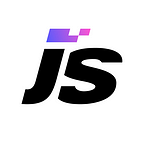Designer’s Motivation And Recipe For Happiness: Tips, Practices & Most Common Management Mistakes
Who are designers, artists or engineers? How to motivate them to grow and develop their professional skills? What’s the recipe for a designer’s happiness?
We discussed these questions with Alexey Kulakov, JetStyle’s CEO and co-founder. He’s researched the essence of the designer profession throughout his career as an art director. As a result, we released an article on our Medium account. It will be useful for designers thinking of ways to grow professionally, and also for their senior colleagues.
We analyze the most frequent barriers that get in the way of designer competencies’ development. Here are a few core ideas from the article:
- At JetStyle, we do interaction design, as we believe that human interaction is the most crucial element of any digital product. However, it doesn’t mean that design should not be beautiful and aesthetic. These adjectives don’t really mean anything when they are used outside the context of the business goal. Still, designers need to have visual experience to be able to create functional interfaces.
- Designers’ thrill lies in the combination of following concepts: state of flow, engaging tasks, adequate feedback and support from their mentors. Another crucial value is an opportunity to see how their work is used in real life. That was ‘the easy’ part; the hard one is to give tasks from their zone of proximal development. At this point, the business may encounter a lack of relevant clients; that’s a problem that should be solved by the sales department.
- There are 6 types of designers’ motivation: skill growth, involvement in the process, desire to change the world, opportunity to see tangible results, curiosity, reward.
- One of the problems experienced by middle-level designers is long feedback loops. Production is often very specific & complex, so it takes a long time until designers can witness the result and appreciation of the work they did for a project. Our best solution so far has been to switch to the product development approach in our design activities.
- Another problem designers face is boring tasks. Working on boring tasks means you don’t contribute to any positive change in the clients’ lives. This issue can be handled from two perspectives. As a company and an employer, we collaborate only with those brands whose work we admire and respect. Also, we choose a direction we’d like to develop in, and start accumulating a portfolio and our own vision in this sphere. On the other hand, designers may ‘fake it till they make it’ — i.e. act as they really want to help their clients deliver real value to customers. Or, a more challenging idea would be to try and explain their vision to the clients — it could work out if a designer has potential for an art director job.
Read more about our vision of each of the points above on our website.
